Xindi Yang
Towards Physically Plausible Video Generation via VLM Planning
Mar 30, 2025Abstract:Video diffusion models (VDMs) have advanced significantly in recent years, enabling the generation of highly realistic videos and drawing the attention of the community in their potential as world simulators. However, despite their capabilities, VDMs often fail to produce physically plausible videos due to an inherent lack of understanding of physics, resulting in incorrect dynamics and event sequences. To address this limitation, we propose a novel two-stage image-to-video generation framework that explicitly incorporates physics. In the first stage, we employ a Vision Language Model (VLM) as a coarse-grained motion planner, integrating chain-of-thought and physics-aware reasoning to predict a rough motion trajectories/changes that approximate real-world physical dynamics while ensuring the inter-frame consistency. In the second stage, we use the predicted motion trajectories/changes to guide the video generation of a VDM. As the predicted motion trajectories/changes are rough, noise is added during inference to provide freedom to the VDM in generating motion with more fine details. Extensive experimental results demonstrate that our framework can produce physically plausible motion, and comparative evaluations highlight the notable superiority of our approach over existing methods. More video results are available on our Project Page: https://madaoer.github.io/projects/physically_plausible_video_generation.
Neural Field Classifiers via Target Encoding and Classification Loss
Mar 02, 2024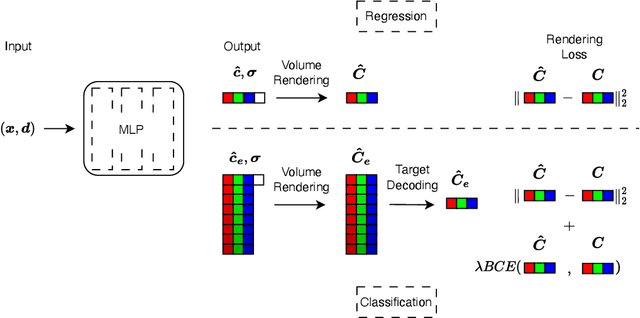
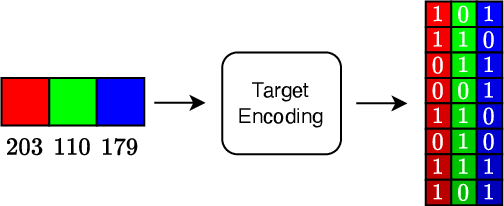
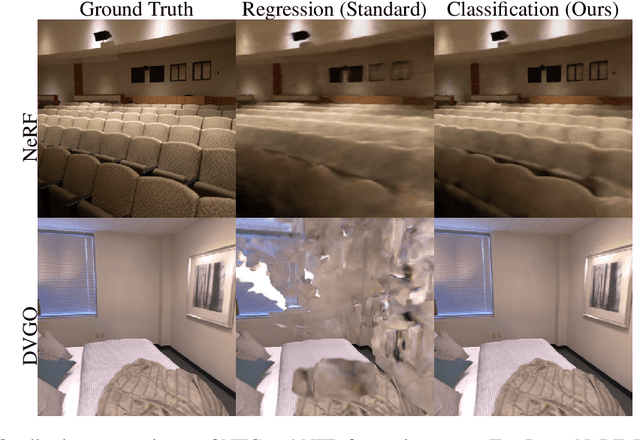
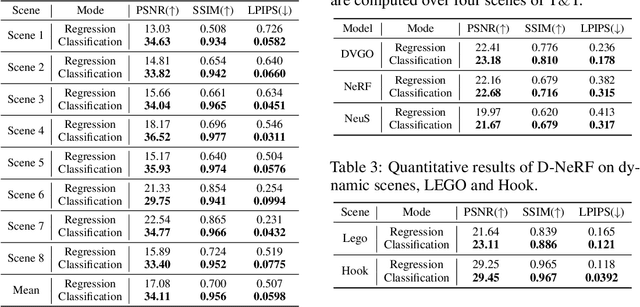
Abstract:Neural field methods have seen great progress in various long-standing tasks in computer vision and computer graphics, including novel view synthesis and geometry reconstruction. As existing neural field methods try to predict some coordinate-based continuous target values, such as RGB for Neural Radiance Field (NeRF), all of these methods are regression models and are optimized by some regression loss. However, are regression models really better than classification models for neural field methods? In this work, we try to visit this very fundamental but overlooked question for neural fields from a machine learning perspective. We successfully propose a novel Neural Field Classifier (NFC) framework which formulates existing neural field methods as classification tasks rather than regression tasks. The proposed NFC can easily transform arbitrary Neural Field Regressor (NFR) into its classification variant via employing a novel Target Encoding module and optimizing a classification loss. By encoding a continuous regression target into a high-dimensional discrete encoding, we naturally formulate a multi-label classification task. Extensive experiments demonstrate the impressive effectiveness of NFC at the nearly free extra computational costs. Moreover, NFC also shows robustness to sparse inputs, corrupted images, and dynamic scenes.
S3IM: Stochastic Structural SIMilarity and Its Unreasonable Effectiveness for Neural Fields
Aug 14, 2023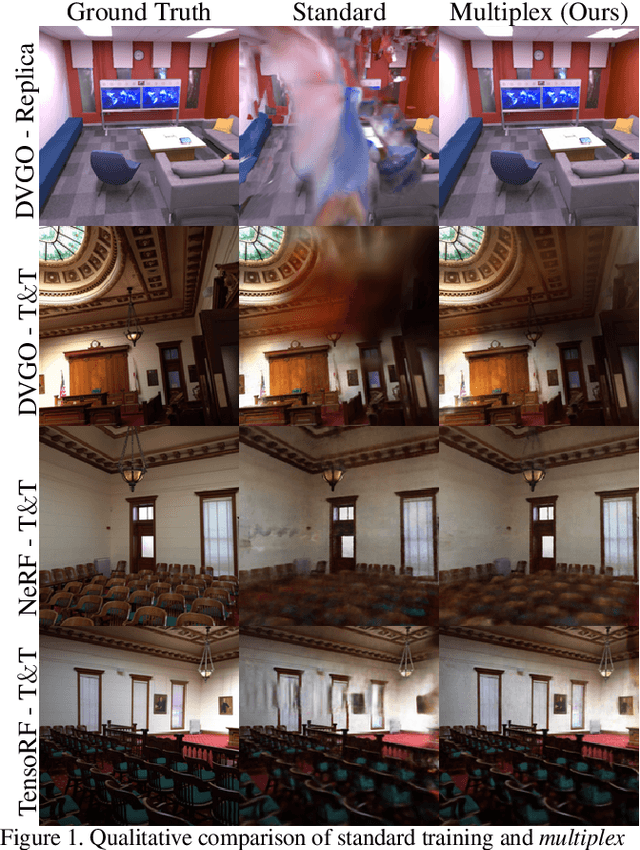


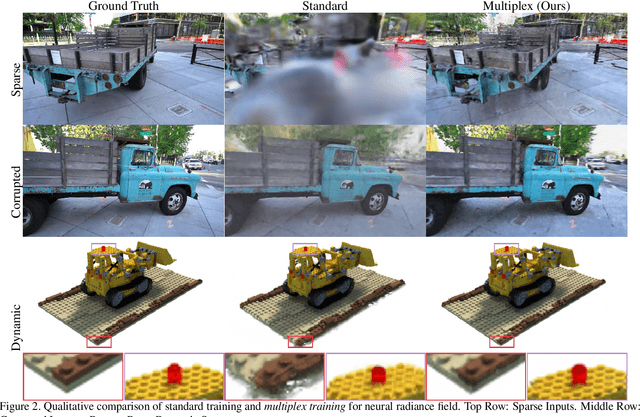
Abstract:Recently, Neural Radiance Field (NeRF) has shown great success in rendering novel-view images of a given scene by learning an implicit representation with only posed RGB images. NeRF and relevant neural field methods (e.g., neural surface representation) typically optimize a point-wise loss and make point-wise predictions, where one data point corresponds to one pixel. Unfortunately, this line of research failed to use the collective supervision of distant pixels, although it is known that pixels in an image or scene can provide rich structural information. To the best of our knowledge, we are the first to design a nonlocal multiplex training paradigm for NeRF and relevant neural field methods via a novel Stochastic Structural SIMilarity (S3IM) loss that processes multiple data points as a whole set instead of process multiple inputs independently. Our extensive experiments demonstrate the unreasonable effectiveness of S3IM in improving NeRF and neural surface representation for nearly free. The improvements of quality metrics can be particularly significant for those relatively difficult tasks: e.g., the test MSE loss unexpectedly drops by more than 90% for TensoRF and DVGO over eight novel view synthesis tasks; a 198% F-score gain and a 64% Chamfer $L_{1}$ distance reduction for NeuS over eight surface reconstruction tasks. Moreover, S3IM is consistently robust even with sparse inputs, corrupted images, and dynamic scenes.
 Add to Chrome
Add to Chrome Add to Firefox
Add to Firefox Add to Edge
Add to Edge